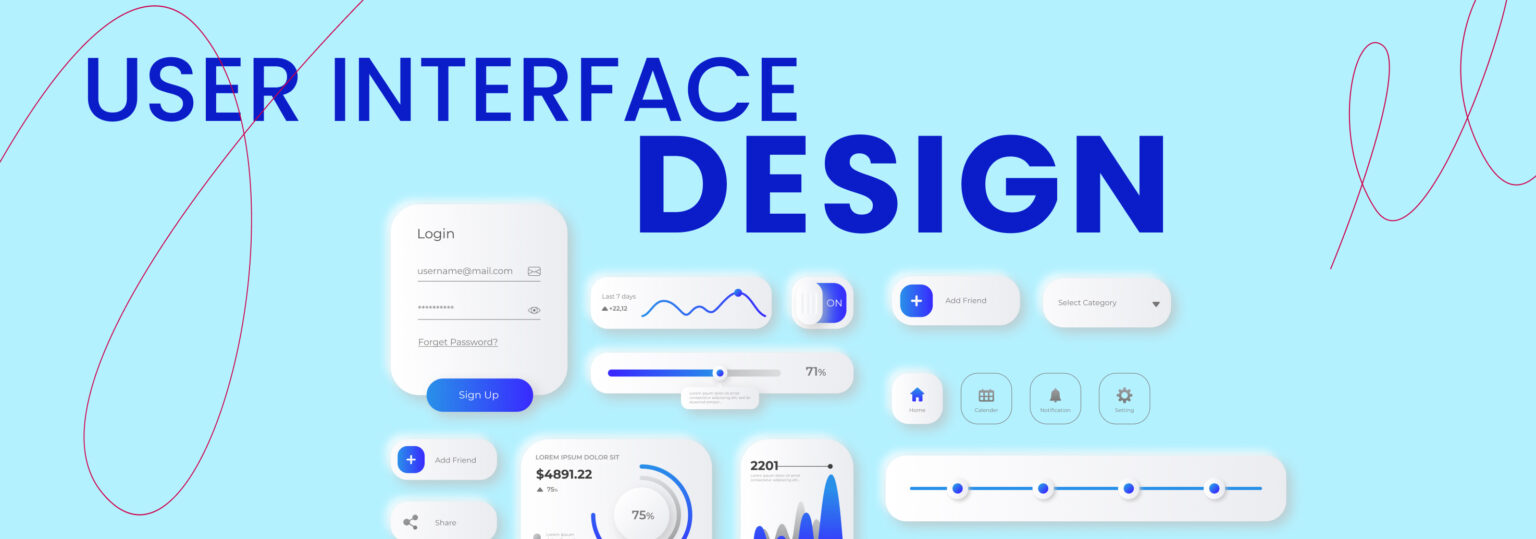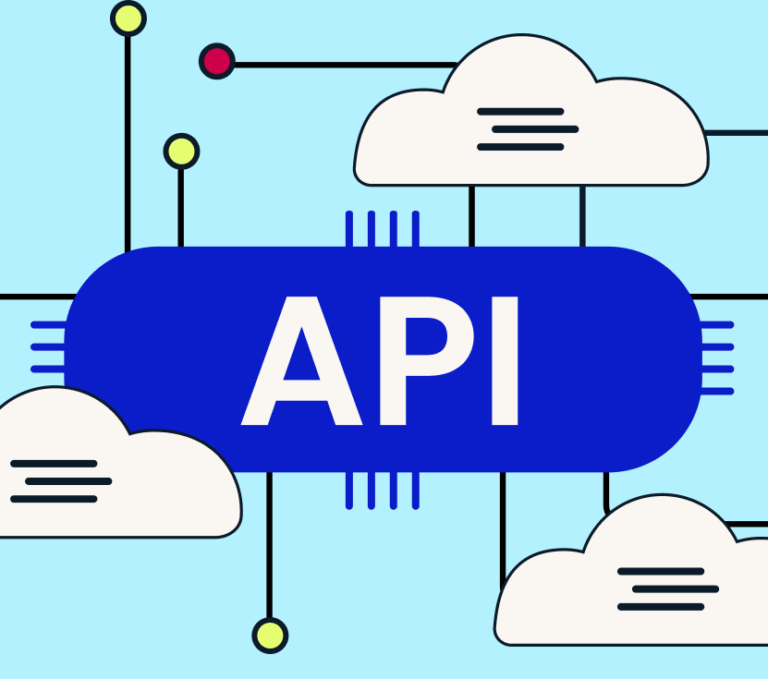
Intro to User Interface Design
What is UI Design?
UI design, also called User Interface design, creates visually attractive and user-friendly interfaces for digital products. These products include websites, mobile apps, software applications, and interactive platforms. The focus is crafting visual elements that improve user experience by making interactions intuitive, efficient, and visually pleasing.
UI designers use buttons, menus, icons, colour schemes, layout structures, and interactive components features. The aim is to design something that looks good and guides users through the interface seamlessly, allowing them to complete tasks quickly.
Designing for Impact: Importance of UI Design
UI design is crucial because it shapes user experiences. It creates visually appealing and intuitive interfaces. This helps users navigate and interact with digital platforms easily. UI design enhances usability by arranging elements, colours, and typography thoughtfully. This reduces cognitive load and improves the user experience.
Consistency in screen designs and platforms simplifies user interaction. It also strengthens brand identity. A well-crafted UI design stimulates positive emotions and increases user satisfaction. On the other hand, a poorly executed design can cause frustration and disengagement.
Principles and Elements of User Interface Design
Key Principles of UI Design
Key UI design principles form the foundation for creating effective digital interfaces. These principles include:
- Simplicity: Keep designs clean and uncomplicated
- Consistency: Maintain uniformity in design elements
- Clarity: Present information clearly
- Hierarchy: Organise content logically
- User feedback: Confirm the user’s action
- Accessibility: Ensuring the interface is usable by everyone
- Aesthetic Design: Creating visually appealing graphic design
- Minimalism: Removing unnecessary decorative elements to avoid clutter and distraction
Essential Elements of UI Design
Here are some essential elements of UI design:
- Visual Hierarchy: Prioritising and organising information using colour, size, contrast, and spacing.
- Typography: Choosing suitable fonts and maintaining consistent typography for readability and branding.
- Navigation: Creating smooth and effective design systems with menus, buttons, search bars and other tools.
- Interaction Design: Crafting interactive elements like buttons, sliders, CSS animation, feedback and forms that respond to user actions.
- Visual Consistency: Ensuring a uniform visual style with consistent colour schemes, icon sets, videos and imagery.
- White Space: The empty space between design elements that helps create visual breathing room, improves readability and highlights important articles or content.
Understanding the Different Types of User Interface
User interface design encompasses various types of interfaces, each tailored to meet specific requirements and user preferences. Below are different types of user interfaces:
Graphical User Interface (GUI)
GUI is the most common user interface nowadays. It uses common elements like icons, buttons, menus, and windows to interact with users. GUI offers a visually attractive and user-centred web design for easy navigation and task execution
Command Line Interface (CLI)
The CLI is a text-based user interface. Users interact with the system by typing commands. It requires knowledge of commands and their syntax. CLI is often used in technical environments and for tasks that need precise control.
Voice User Interface (VUI)
This voice-controlled interface allows users to interact with a system using voice commands. Some user interface design examples with voice command features are the popular virtual assistants like Siri, Alexa, and Google Assistant. VUI provides a convenient and hands-free user experience, especially when a screen is unusable, like when driving.
Touch User Interface (TUI)
TUI is made for touch-enabled devices. It uses gestures like tapping, swiping, pinching, and dragging. TUI makes interactions easy and is commonly used in mobile apps and touchscreen interfaces.
Augmented Reality Interface (AR)
AR interfaces enhance a user’s perception and interaction with the environment by overlaying digital type of content in the real world. They are commonly used in the gaming, retail, and industrial sectors. AR interfaces blend virtual and real-world elements to provide a unique and immersive user experience.
UI Design Best Practices for Engaging Websites
Effective UI design requires several best practices to produce engaging websites, including:
Use Simple and Clear Navigation
Design a user-friendly navigation structure that lets visitors easily find what they want.
Create a Responsive Design
Make sure your website functions properly on different individual screen sizes and devices. Responsive design ensures a consistent and immersive experience on all platforms.
Visual Hierarchy
Use visual hierarchy to direct users’ focus on important elements. Employ different colours, fonts, and sizes to highlight crucial information.
Utilise Whitespaces
Whitespace is important for readability and organisation. It helps reduce visual clutter and improves user attention.
Have a Consistent Branding
Maintain consistent branding elements throughout the website for a cohesive and recognisable identity.
Strategic CTA Placement
Place call-to-action (CTA) buttons in strategic locations to prompt user interaction. Utilise contrasting colours and persuasive language to encourage action.
Improve Loading Speed
To ensure fast loading times, optimise images and code. Slow websites can discourage users and affect engagement.
Differentiating UI/UX Design
UI vs UX: Exploring the Differences
The visual elements and interactions of a product are addressed by UI design, which includes components like layout, colours, typography, icons, and interactive elements such as buttons. It focuses on generating visually appealing and engaging designs that improve the aesthetics and interactivity of the product.
UX design, on the other hand, is concerned with the complete user experience, which includes research, user profiles, user flows, and ensuring a smooth user journey. It prioritises user demands, emotions, and perceptions to produce user-friendly, efficient, and emotionally relevant designs.
Collaborative Relationship Between UI and UX Design
User experience (UX) and user interface (UI) work together to create a user-friendly and engaging digital experience. UX concentrates on understanding user needs, behaviours, and business goals through research and mapping user journeys. It ensures a smooth and intuitive flow on the website.
UI design focuses on the visual aspects that users interact with directly. This includes designing layouts, colours, fonts, and interactive elements like buttons. UX sets the strategy, while UI brings it to life visually, resulting in a cohesive and satisfying user experience from start to finish.
Finding a Reliable UI Designer
When searching for a reliable UI designer, it’s essential to take a systematic approach.
- Clarify your project needs and do online research.
- Look at portfolios to see their design style and versatility.
- Prioritise graphic designers with relevant experience and positive feedback.
- Consider their skills and understanding of responsive design.
- Make sure they can align with your project timeline.
- Conduct interviews and ask for references.
- Establish a clear contract with project details, terms, and milestones.
Partner with Butterfly for UI Excellence
Butterfly is a renowned web design agency in Melbourne specialising in creating stunning and user-friendly digital products and website interfaces. Butterfly has an impressive portfolio of successful and inspiring projects and is passionate about professional development. We craft intuitive user interfaces that resonate with our client’s audience and drive meaningful engagement. Want to partner with Butterfly for UI excellence? Contact us today!



